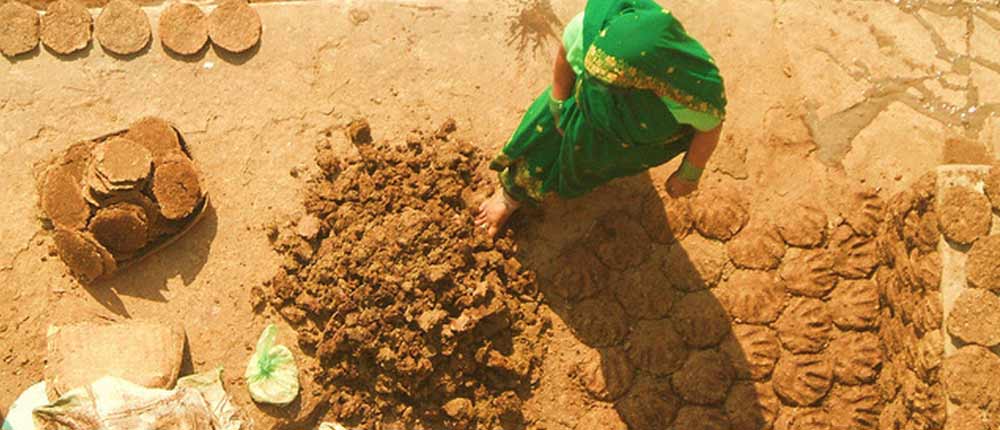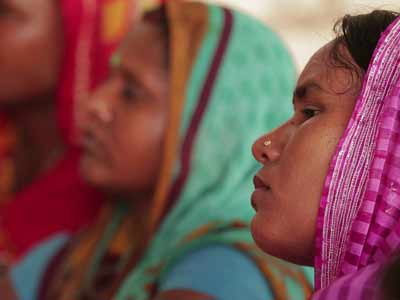Biogas is an easy solution to wet waste, but a sustainable model requires govt subsidy support
 With government's increased impetus on tapping energy from waste, traditional methods of resource management are beginning to resurface albeit with better visibility. The Galvanizing Organic Bio Agro Resources Dhan (GOBAR-DHAN) scheme was announced by the Finance Minister Arun Jaitley during the budget speech this year is expected to be launched in April 2018. The scheme according to the Finance Minister would contribute towards management and conversion of cattle dung and solid waste in farms to compost, fertilizer, bio-gas and bio-CNG.
With government's increased impetus on tapping energy from waste, traditional methods of resource management are beginning to resurface albeit with better visibility. The Galvanizing Organic Bio Agro Resources Dhan (GOBAR-DHAN) scheme was announced by the Finance Minister Arun Jaitley during the budget speech this year is expected to be launched in April 2018. The scheme according to the Finance Minister would contribute towards management and conversion of cattle dung and solid waste in farms to compost, fertilizer, bio-gas and bio-CNG.
The Indian scenario
India today boasts of a cattle population of over 300 million according to the 19th Livestock census in 2012. The huge population depicts an enormous potential for biogas, considering a dung production of roughly 10kg per capita and that 25kg of dung produces 1 m3 of biogas as a rule of thumb. Biogas could be used for sundry purposes which include cooking, lighting and electricity generation to name a few. Most commonly, 1.5-2.4 m3 of gas would be required by a family of five for 2 meals in day. The illustration below draws an equivalence of biogas with other fuels depicts1
|
Name of Fuel |
Kerosene |
Fire wood |
Cow Dung cakes |
Charcoal |
Soft Coke |
Butane |
Furnace Oil |
Coal Gas |
Electricity |
|
Equivalence of 1m3 biogas |
0.620 kg |
3.474 kg |
12.29 Kg |
1.458 Kg |
1.605 Kg |
0.433 Kg |
0.4171 kg |
1.177 m3 |
4.698 KWh |
The use of biogas could also help further reduce our dependence on other fuels, while assuming a tag of environmental friendly clean fuel owing to minimal emissions.
What is GOBAR DHAN?
In his monthly address to the nation "Mann Ki Baat", Prime Minister Narendra Modi expressed that the GOBAR- DHAN scheme would be aimed at ensuring cleanliness in villages and generating wealth and energy by converting cattle dung and solid agricultural waste into Compost and Bio Gas. He further expressed that the sale of compost and biogas would augment the income of the farmers whilst improving levels of sanitation in villages and increasing farm yields. The yojana would pilot under the Swachh Bharat Gramin Mission.
A glimpse at the evolution of biogas technology in India
The footprint of the technology was established as early as 1942 when the first biogas plant was designed at India Agricultural Research Institute by N.V Joshi2. However, the early plants were expensive, were prone to explosions and lacked output efficiency to be commercially viable. The following years saw the development of floating dome model by Jashbai Patel and its promotion by Khadi and Village Industry Commission in the name of KVIC model. Research on various technologies of anaerobic digestion continued with the development of the Janata Model (fixed dome plant) by the Planning Research and Action Division (PRAD) based in Uttar Pradesh. The Janata model was known to be 30% cheaper than the KVIC model with added advantages such as no moving parts which made the possibility of local maintenance easier. However, the accumulation and cleaning of sludge was still a cause of concern. Towards the end of 1975-81, the biogas programme was inducted into the twenty point programme designed by Government of India. This was followed by the launch of a development programme called National Programme for Biogas development (NPBD) by Ministry of Agriculture, Government of India. NPBD was then taken over by Department of Non-Conventional Energy Sources (DNES) created under Ministry of Power. In 1984, a new design called Deenbandhu biogas plant was introduced. Although the model was a developed version of the Janata model, it was considered to reduce installation costs further. This popular design was soon a breakthrough in India and saw the implementation of multiple plants around the country. This however, led to a newer phase of non-operational or malfunctioning plants requiring further dispersed attention. The implementation of NPBD was characterized by reforms which encouraged the participation of entrepreneurs and autonomous institutions to take part in the implementation. By 1996, there were seven biogas plant designs available in the market which included Janata, Deenbandhu and Flexi design. However, problems relating to implementation remained ranging from improper sizing of plants, technical failures, lack of regular dung availability, to lack of technical expertise for process maintenance. Subsidies and free electricity to farmers could have contributed as disincentives to adoption unless subsidy for biogas was available. One other factor was the inertia behind changing traditional practices of burning wood or crop residue and adopting waste based cooking for preparing staple food such as Roti's could also have acted as dampeners for adaptation.
The way forward
While clearly biogas could easily be a solution to wet waste management and a substitute in the form of a cleaner fuel, it's imperative we learn and evolve from constraints faced historically. Implementation of a self-sustainable business model is key. We may take cue from success stories such as the Gobar Bank model in Surat or metered cooking gas initiative by Cooperative Service Society in Punjab. Efficient supply chain management of cattle dung to plants is required to avoid low feeding of plants leading to disruption in output. With advances in technology, raw material aggregation may be one very important aspect to be addressed. Considering the increased rural electrification increasing deployment of solar power and discounted power prices for farmers there is definitely an underlying call for an incentive to promote Gobar gas. The government must streamline and fast track implementation and disbursement of eligible subsidy either under National Biogas and Manure Management Programme or GOBAR-DHAN yojana to ensure sustainable replicability. Technical support and capacity building to address aging or ailing plants other key factors aiding growth of biogas based models in the country. With appropriate measures to address issues, the sector could be given the much needed thrust. With a rejuvenated intension, GOBAR- DHAN could be that one substantial step in that direction.
Originally published in Kurukshetra, May 2018.
1. http://web.iitd.ac.in/~vkvijay/Biogas_%20A%20fit%20Option%20for%20Rural%20Energy.pdf
2. Biogas Technology in India - ShodhGanga

